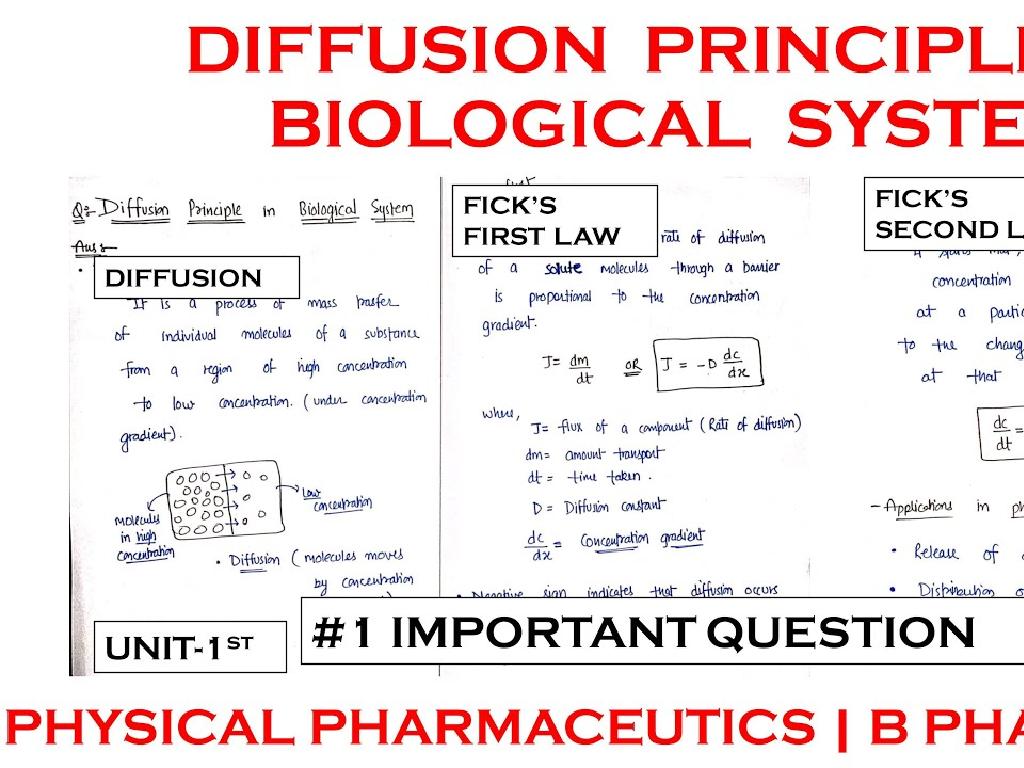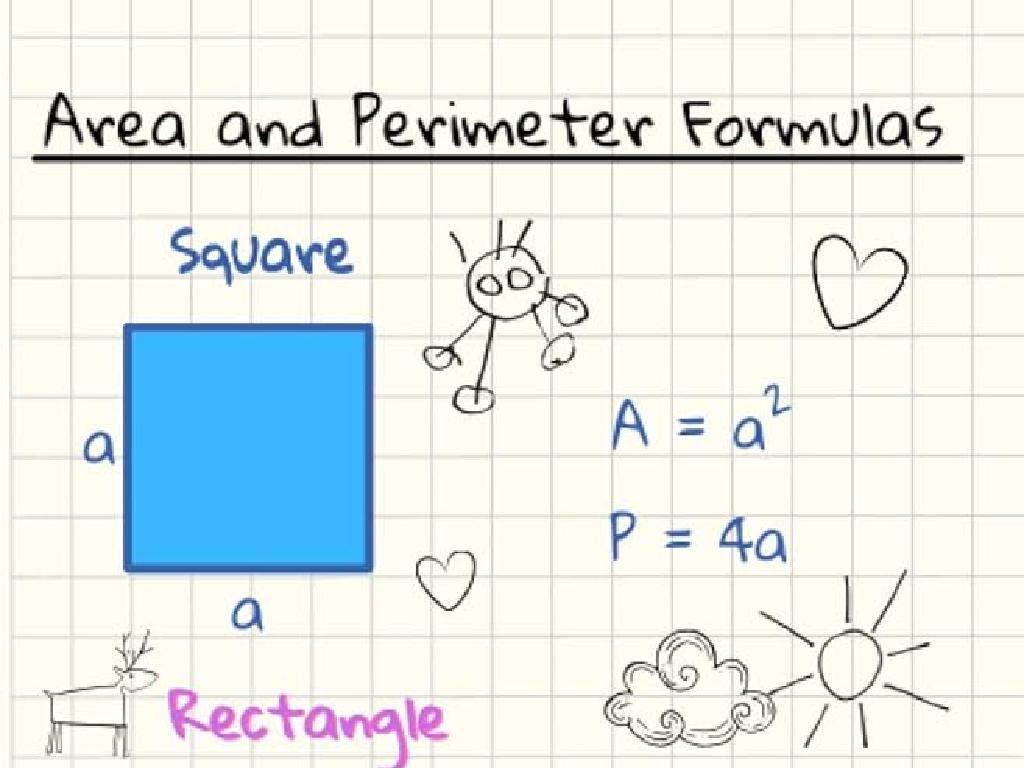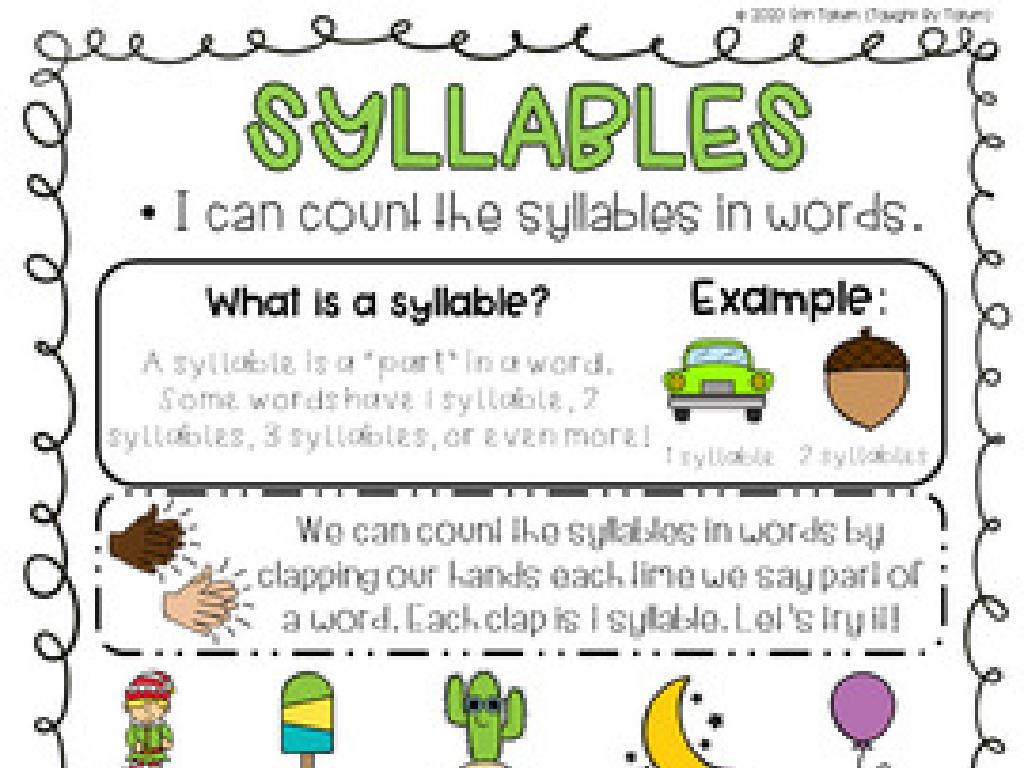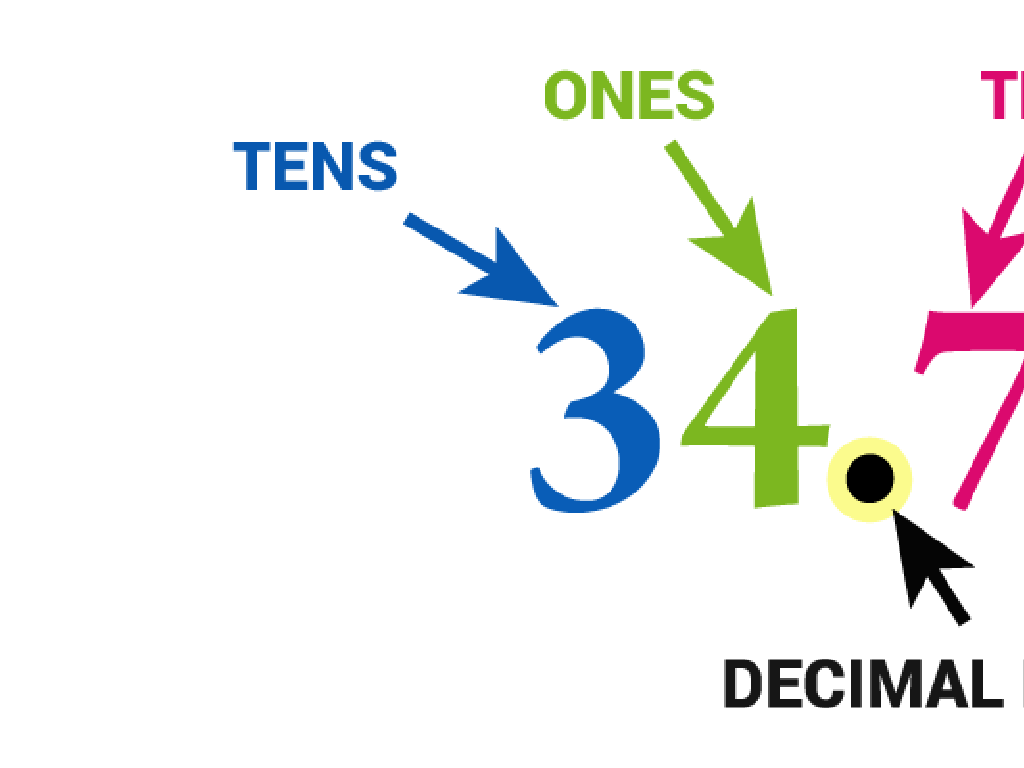Complete The Addition Sentence - Up To Two Digits
Subject: Math
Grade: Second grade
Topic: Addition: Two Digits
Please LOG IN to download the presentation. Access is available to registered users only.
View More Content
Welcome to Addition!
– Becoming addition experts
– Adding two-digit numbers
– Stack numbers & add ones then tens
– Addition’s role in daily life
– Use for time, money & counting objects
– Practice makes perfect
|
Today’s lesson is designed to help students become confident in adding two-digit numbers, a fundamental skill in mathematics. Start by explaining the process of stacking numbers vertically and adding the ones place followed by the tens place. Emphasize the importance of addition in everyday situations such as telling time, handling money, and counting various items. Encourage students to understand that mastering addition is not only crucial for math but also for their daily activities. Provide plenty of examples and practice problems to reinforce the concept. Remember to praise their efforts as they work towards becoming addition experts!
Understanding Addition: Combining Numbers
– Addition means putting numbers together
– Adding makes the total number larger
– Example: 2 apples + 3 apples
– Start with 2 apples, add 3 more
– How many apples do you have now?
– It’s like gathering all your apples into one basket
|
This slide introduces the concept of addition to second-grade students. Begin by explaining that addition is simply the process of combining two or more numbers to make a new, bigger number. Use tangible examples, like combining apples, to make the concept relatable and easier to understand. Show how when we add 2 apples to 3 apples, we are combining them to find out how many apples there are in total. Encourage the students to visualize the process of adding the numbers as if they were physically putting the apples together. Ask the students to think of other examples where they combine things in their daily life to reinforce the concept.
Review: Adding Single Digits
– Review single-digit addition
– Practice example: 5 + 3
– What does 5 plus 3 equal to?
– Use fingers for counting
– It’s okay to use fingers to add up numbers
– Understand addition basics
– Grasping the concept of putting together amounts
|
This slide is aimed at refreshing the students’ memory on how to add single-digit numbers, a foundational skill necessary for moving on to two-digit addition. Start by explaining that addition is a way of finding out how much you have in total when you put groups of things together. Encourage the students to use their fingers if they find it helpful as a physical representation of the numbers being added. The practice example should be solved as a class, with the teacher guiding the students through the process of counting on. Emphasize that understanding these basics is crucial for tackling more complex addition problems. For the activity, students can be paired up to practice more single-digit addition or use objects like blocks or counters to visualize the concept.
Introduction to Two-Digit Addition
– Two-digit addition basics
– Start with the ones place
– Add the rightmost digits: 3 + 5
– Then add the tens place
– Next, add the left digits: 20 + 10
– Example: 23 + 15
– First, add ones: 3 + 5 = 8, then tens: 20 + 10 = 30, finally combine: 30 + 8 = 38
|
This slide introduces students to the concept of two-digit addition. Emphasize that the process is similar to single-digit addition but involves larger numbers. Start by explaining that they should always begin with the ones place (the rightmost digits), then move to the tens place. Use the example 23 + 15 to illustrate the process: add the ones place digits (3 + 5) to get 8, then add the tens place digits (20 + 10) to get 30. Finally, combine the sums of the ones and tens places to find the total. Encourage students to practice with different numbers and ensure they understand the importance of aligning the digits correctly by place value.
Completing the Addition Sentence
– Understanding missing numbers
– Finding the missing addend
– Use subtraction to find the missing number
– Example: 34 + ? = 50
– What number added to 34 equals 50?
– Solving addition puzzles
– Practice with different numbers to master
|
This slide introduces the concept of finding missing numbers in addition sentences, a key skill in second-grade math. Start by explaining that sometimes, one part of an addition problem is unknown, and we call this the missing addend. To find the missing number, we can use subtraction as the inverse operation of addition. For example, to find the missing number in 34 + ? = 50, we subtract 34 from 50. Encourage students to think of these problems as puzzles where they need to find the piece that completes the picture. Provide several examples and practice problems to help students become comfortable with this concept. Remember to praise their efforts and progress to build confidence.
Let’s Practice Addition Together!
– Practice problem: 42 + ? = 67
– Think of the missing number
– What number makes 42 become 67?
– Solve it step by step
– We’ll add numbers to 42 until we reach 67
– Find the sum together
– We’ll use counting up strategy to find the answer
|
This slide is designed to engage second-grade students in a guided practice of completing an addition sentence with two-digit numbers. Start by presenting the problem 42 + ? = 67 and ask the students to think about what number needs to be added to 42 to make 67. Walk through the problem-solving process step by step, encouraging students to count up from 42 or use other strategies they’ve learned. For example, they might add 8 to get to 50 and then add 17 more to reach 67, concluding that the missing number is 25. This exercise will help reinforce their understanding of addition and the concept of ‘finding the missing addend’. During the next class, review the problem and discuss different methods students may have used to find the solution.
Using Tools for Addition
– Use tools like number lines
– A number line helps us count steps between numbers
– Counting blocks aid addition
– Blocks let us build and count to find sums
– Visualize numbers with tools
– Practice with a number line
– Let’s add 23 + 15 using a number line together
|
This slide introduces students to helpful tools such as number lines and counting blocks that can make learning addition easier and more interactive. Emphasize the importance of visual aids in understanding mathematical concepts. Demonstrate how to use a number line by starting at the first number and taking steps equal to the second number to find the sum. Similarly, show how to use counting blocks by grouping them to represent each addend and then counting all the blocks together. Encourage students to use these tools for the class activity where they will solve an addition problem using a number line. Prepare to guide them through the process and ensure they understand each step.
Class Activity: Addition Race
– Teams solve addition problems
– Each team gets a set of problems
– First team to finish wins
– Focus on accuracy and teamwork
– Double-check answers for correctness
|
This activity is designed to encourage teamwork and improve addition skills. Divide the class into small groups, ensuring a mix of abilities in each team. Provide each team with a set of addition problems that include two-digit numbers. The goal is to be the first team to complete all problems correctly, emphasizing both speed and accuracy. Encourage students to work together and help each other understand the addition concepts. Possible variations of the activity could include a relay race where each student solves one problem before passing it on, or a ‘math marathon’ with a larger set of problems for extended practice. Remember to celebrate all teams for their effort and participation.
Great Work on Addition!
– Congratulations on your hard work
– Homework: Addition worksheet
– Complete the worksheet with two-digit addition sentences
– Practice makes perfect
– The more you practice, the better you’ll get!
– Keep practicing at home!
– Try creating your own addition problems too
|
This slide is meant to wrap up the lesson on two-digit addition and to set expectations for homework. Praise the students for their effort during the class to boost their confidence. The homework consists of a worksheet that reinforces what they’ve learned. Remind them that practicing these skills is crucial for mastery. Encourage them to not only complete the worksheet but also to challenge themselves by creating additional problems. This will help solidify their understanding of two-digit addition. For the next class, be prepared to review the homework and address any questions or difficulties the students may have encountered.






